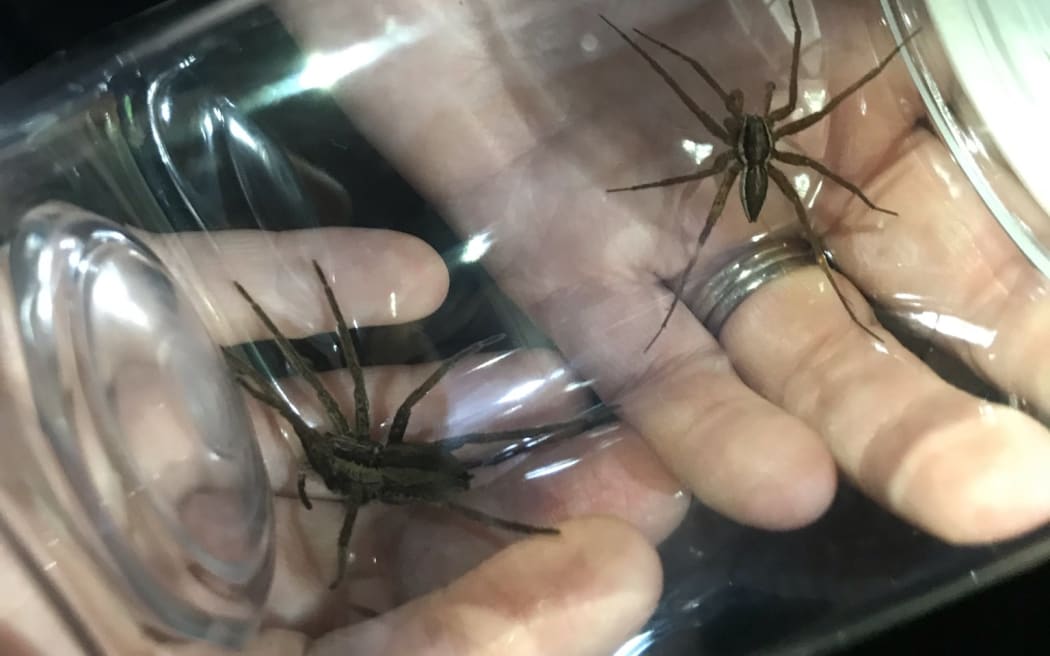Simon Connolly has watched around 1100 hours of footage of male spiders being placed into plastic containers with females inside. Sometimes they mate. Sometimes they get eaten. But that’s just how it goes. Spider sex can be a risky business.

A male (smaller) and female nurseryweb spider. Photo: Claire Concannon,
Follow Our Changing World on Apple Podcasts, Spotify, Stitcher, iHeartRADIO, Google Podcasts, RadioPublic or wherever you listen to your podcasts
Simon is part of the invertebrate behavioural ecology lab at the University of Waikato, where he is working towards a PhD. His supervisor, Dr Chrissie Painting, is interested in the big questions around how and why different mating systems evolve.
Chrissie is figuring out what prerequisites you need for a mating system called monogyny to evolve. Monogyny is when males mate with just one female – a set up that bucks the ‘classic’ sexual selection theory that says that males of a species will generally tend to try to mate with as many females as possible to ensure the continuation of their genes.
To identify the evolutionary steps that might lead a creature to go down the monogyny mating system route, Chrissie is focusing on a group of spiders that seem to show remarkable variation in the mating systems they employ.
Listen to the episode to join Claire Concannon, Chrissie and Simon on a spider hunt in Kirikiriroa Hamilton, to find out about this remarkable group of spiders (some of whom can fish!), and hear how Chrissie hopes this research will add to our understanding of life on earth.
Research into the evolution of mating systems in Dolomedes spiders is supported by a 2022 Marsden Fast-Start Grant awarded to Dr Painting. The project is in collaboration with researchers at the University of Nebraska-Lincoln, the National Institute of Biology in Slovenia and with Dr O’Neale at the University of Auckland.
To learn more:
- Listen to the full episode on Our Changing World.


